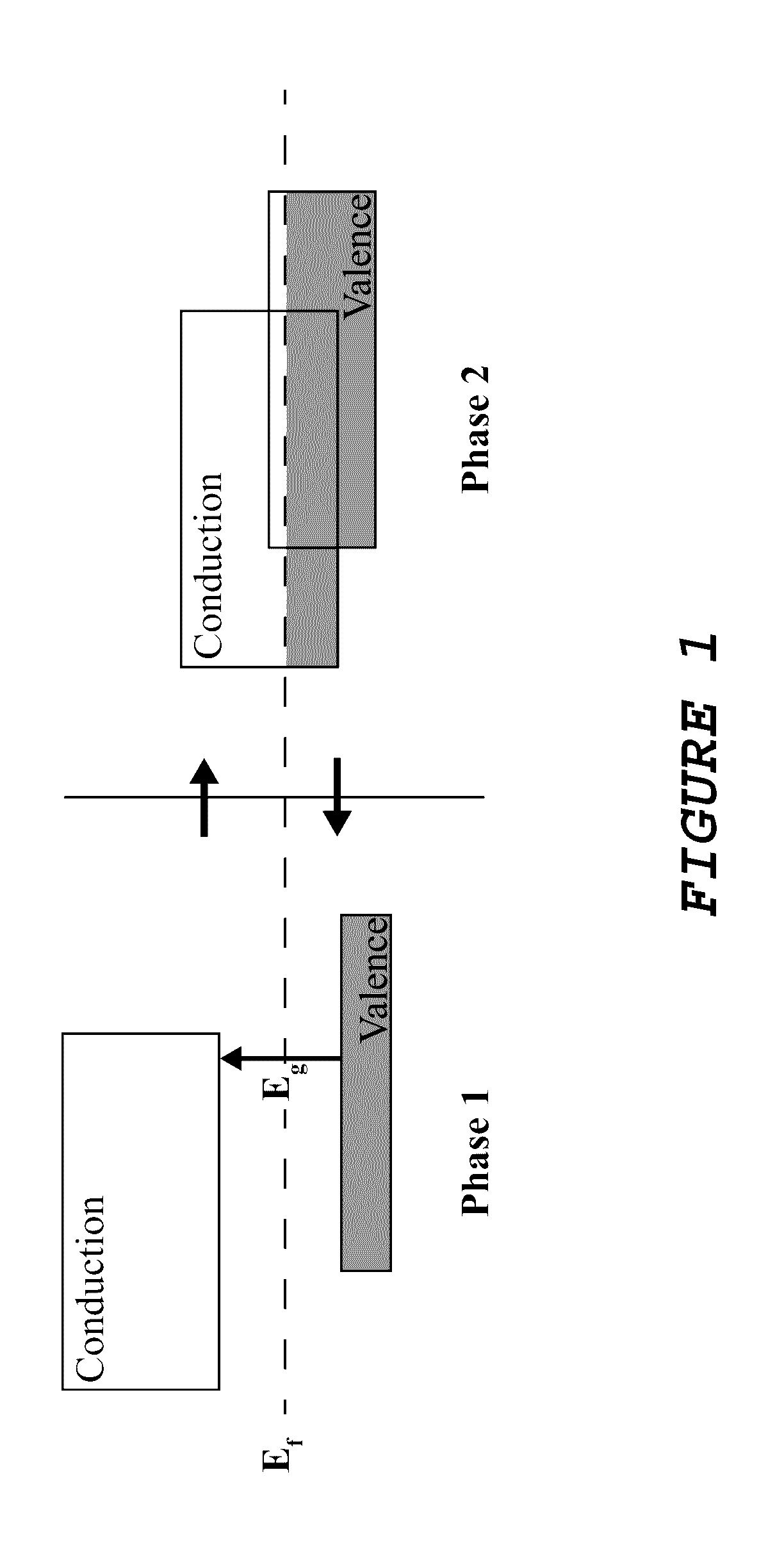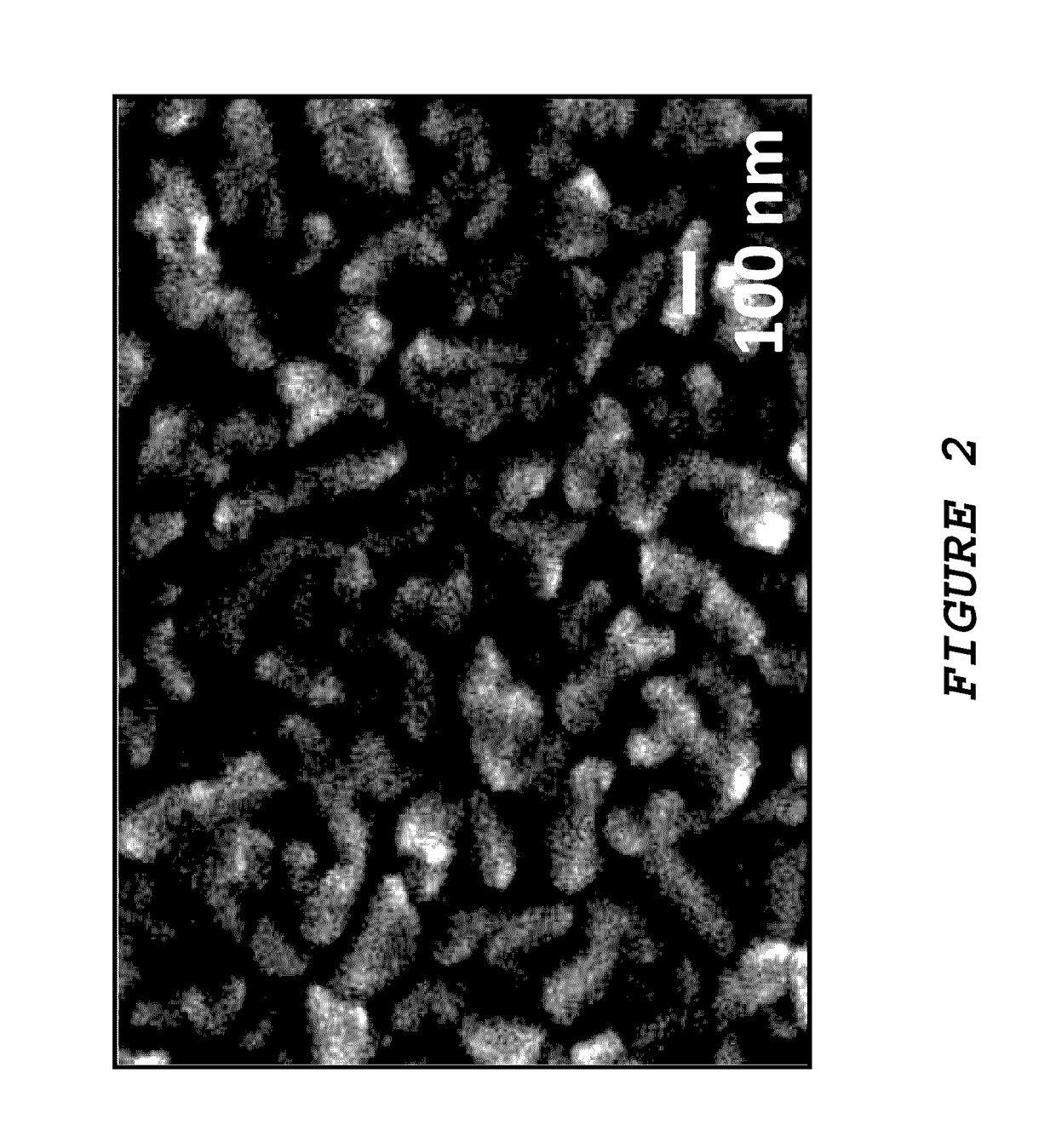Self-organized solid-state synthetic neuronal structure
a solid-state, self-organized technology, applied in the field of synthetic neurons, can solve the problems of limiting current and increasing voltage across the interface, and achieve the effect of changing the conductivity of the structur
- Summary
- Abstract
- Description
- Claims
- Application Information
AI Technical Summary
Benefits of technology
Problems solved by technology
Method used
Image
Examples
Embodiment Construction
[0030]The present invention makes use of a low activation energy, semiconductor-metal phase transition (PT) material. In the exemplified embodiment of the invention, vanadium dioxide (VO2) is employed as such a PT material. VO2 is a semiconductor with a small energy bandgap at low temperatures which transitions into a metal upon activation. This activation can be induced by photoelectric effects, by direct electrical or potential bias or by temperature. The PT temperature of the material can be tuned and is typically around room temperature (300° K). When current densities are involved, typical values are around 1 nA / nm2 making it a low power and practical solution in micro-nanoelectronics. The response time of the material can range between femto-seconds for activation and picoseconds for relaxation, making it an excellent candidate for fast electronic dynamics.
[0031]In an exemplary embodiment of the invention, activation of the PT material is induced by a small electrical current ...
PUM
 Login to View More
Login to View More Abstract
Description
Claims
Application Information
 Login to View More
Login to View More - R&D
- Intellectual Property
- Life Sciences
- Materials
- Tech Scout
- Unparalleled Data Quality
- Higher Quality Content
- 60% Fewer Hallucinations
Browse by: Latest US Patents, China's latest patents, Technical Efficacy Thesaurus, Application Domain, Technology Topic, Popular Technical Reports.
© 2025 PatSnap. All rights reserved.Legal|Privacy policy|Modern Slavery Act Transparency Statement|Sitemap|About US| Contact US: help@patsnap.com



